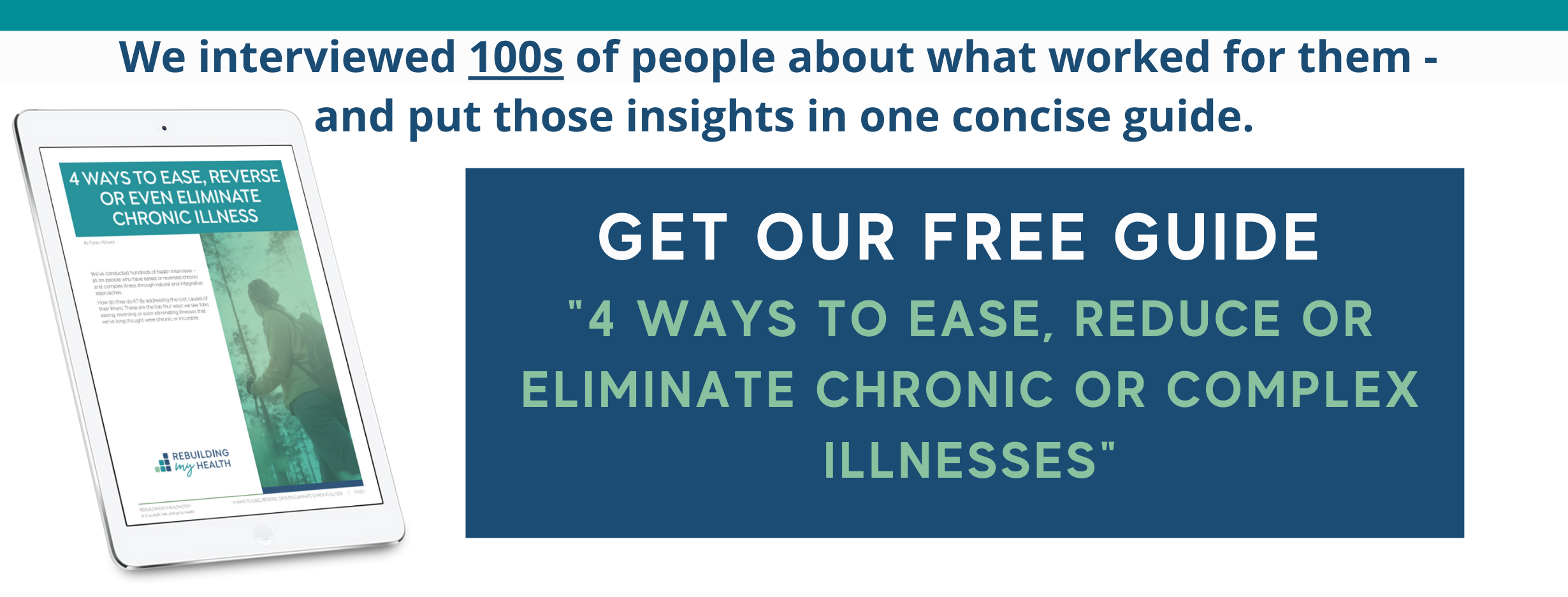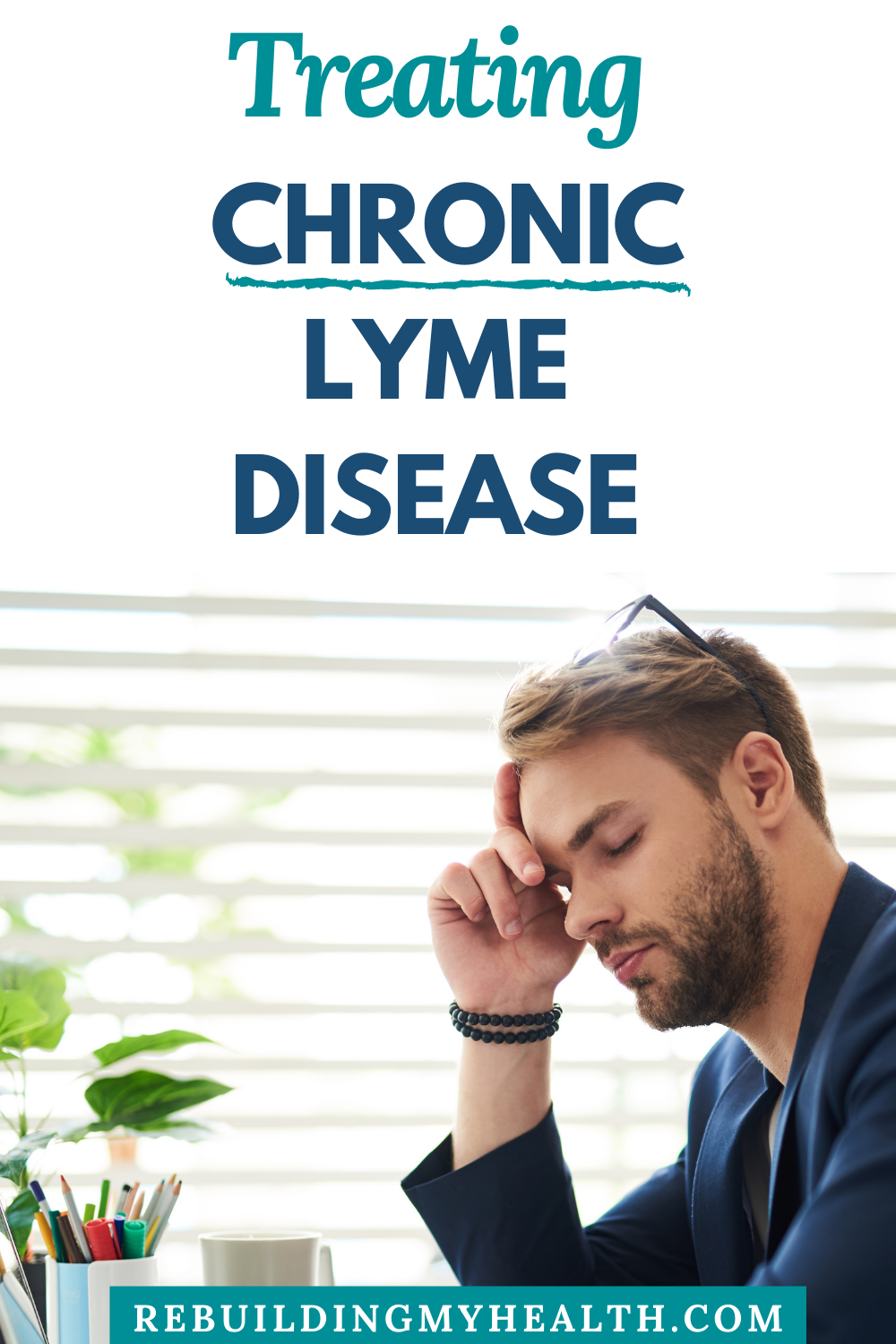A North Carolina Man’s Integrative Treatment for Chronic Lyme Disease
“I realized that I had spent a lot and didn’t really feel better. I couldn’t keep going to all these doctors. I had to look at what I was doing, eating and breathing.”
– Johnny O’Hanlon
On a balmy night in August 2015, Johnny O’Hanlon set out to celebrate his 30th birthday with friends.
He looked forward to a dream weekend on a pristine Idaho lake. But instead, the trip felt closer to a nightmare.
En route from his home in Colorado, he stopped roadside for a nature break in tall grass. Within a couple of hours, upon arrival at the lake, Johnny suddenly no longer felt like himself.
“I immediately felt inanimate,” he recalls. “I had some strange psychiatric expressions. I was vengeful, nervous, frightened by the sight of my friends. I was sneering and almost vindictive. I knew something was wrong but didn’t know what.”
“I was absolutely, completely normal until the point when I got out of the car in Idaho,” he adds. “The week before I had hiked Long’s Peak in under eight hours and then worked a full day.”
The next day, the odd assortment of symptoms persisted. He felt distant and had difficulty breathing – forcing him to return home early from his birthday weekend.
Back home, as the symptoms worsened, he examined the clues: the neurological and psychiatric ailments, the roadside pee, and finally, the discovery of a dead tick on his hip. The various puzzle pieces began to form a picture. Johnny suspected Lyme disease.
Yet it would take nine agonizing months for him to finally get a diagnosis.
Three years later, the disease has upended Johnny’s life. The once-active, ambitious young man had to stop working and move back in with his parents after spending more than $50,000 on doctors’ visits and treatment.
And yet, he’s come a long way and is ready to share what he’s learned about how to feel better living with Lyme.
From Summiting Peaks to Warming the Couch
Johnny O’Hanlon grew up in upstate New York before moving to Boulder, Colorado for college. After graduation, he remained in Colorado and became a partner in a company.
Like most Coloradans, he spent his spare time outdoors, hiking, biking, climbing, gardening and more. He also traveled the globe, and met his wife in Thailand.
But the fatigue and debilitating symptoms that followed the Idaho trip changed life overnight. Enduring flu-like symptoms, tremors, photophobia, numbness in his extremities, facial palsy, night blindness, coughing and more, he became essentially couch bound.
For this world traveler, who had once hiked to Everest base camp, it almost felt like he was suffering from permanent acute mountain sickness.
“I felt like my head was in an airplane,” he says. “And I couldn’t walk without feeling like I was walking through some heavy mass.”
He had no choice but to scale work down to part time.
Over the next few months, he saw numerous doctors, including a couple of trips to urgent care and the emergency room.
Physicians prescribed the antibiotic, doxycycline. With it, he found temporary relief from symptoms, such as facial palsy and photophobia. But numbness, tremors, brain pressure and overall inflammation persisted.
Finally… A Lyme Disease Diagnosis
For nine months, Johnny chased a diagnosis, as he visited one physician after another. From the start, he had asked about Lyme, but repeatedly all tests for Lyme – and every other lab test – came back negative.
“I knew intuitively from the beginning that I had Lyme. But I was in this bizarre, carnivalistic fun house where my labs were completely normal,” he says.
He now knows that the typical form of testing for Lyme, the Western blot, is not always accurate.
Johnny then turned to a naturopathic doctor in Boulder, who listened and shared his suspicion regarding Lyme. That practitioner ordered a PCR test from DNA Connexions, which finally revealed that he did, in fact, have Lyme.
“It was as if I had no voice for nine months and then this woman was sitting in front of me saying, ‘Yes, I hear you. You have Lyme,’” he says.
A Full-On Assault Against Lyme Disease
Under the naturopath’s care, Johnny began a “supplement assault” of medications, vitamins and herbs aimed at killing the Lyme infection. The multi-prong protocol included traditional antibiotics: doxycycline, amoxicillin, Tindamax and Nystatin.
The naturopath also recommended herbs, including Samento, Banderol and Stevia. He used chlorella, activated charcoal and bentonite clay as binders for biotoxins, plus glutathione for activating detox pathways.
At the same time, he supported his body with supplements like probiotics, fish oil, magnesium, turmeric and more.
Later, in 2017, Johnny decided to try antibiotic IV treatment at an in-house clinic.
With all this work, his symptoms DID start easing. The brain fog dissipated and his vision cleared enough that he could read again.
But he didn’t notice a measurable difference until he took other steps to clean up his body.
“I realized that I had spent a lot and didn’t really feel better. I couldn’t keep going to all these doctors,” he says. “I had to look at what I was doing, eating and breathing.”
He began eating an organic, ketogenic diet and eliminating reactive foods, which changed the game for him. He also stopped all antibiotics and used herbal tinctures instead.
“I no longer had brain fog, was in a better mood and didn’t have cerebral inflammation,” he says.
He swapped chemical soaps, toothpaste and lotions for natural versions. He began purifying the air in his home, wearing old clothes to avoid dyes, drinking filtered water, and getting outside and walking daily.
He also moved out of his parents’ home after learning the house had mold, which can seriously affect those with already compromised immune systems.
“I’ve become a man of peculiar habits,” he says. “I spray down the shower with hydrogen peroxide to prevent mold and can’t have wi-fi in the house because of the electromagnetic fields.”
Lifting the Fog of Chronic Lyme Disease
As the illness sapped his body and bank account, Johnny and his wife moved to Wilmington, North Carolina to live with his parents. His wife took on a caretaker role and worked full-time to support them.
Despite being nearly bedridden, he began walking for three to five minutes every day – no matter how hard it was. From there, he increased his activity to meditation and Qigong.
“I looked up Qigong videos online and did them at home,” he says. “I can’t believe how much it changed my psychology.”
Finally, he tried swimming in the ocean near Wilmington, which invigorated him in a way nothing else had. Now, he swims four to five times a week.
“In three years of being sick, the best I’ve ever felt is when I swim in the ocean or lake,” he says. “Cold water pushes lymph through the body and salt water acts like a natural antihistamine. Plus, there’s no pressure or force on the body.”
With movement, Johnny watched numbness and myalgia go away.
He’s come a long way in the past year. While he still experiences Lyme symptoms, he is now functional. He cleans, cooks, reads, exercises daily, has started a Lyme blog, and buys and sells furniture as a source of income.
As for the next step, Johnny has started Stephen Buhner’s herbal protocols for Lyme, parasites, yeast and clostridium, which has already given him more energy. In addition, he regularly visits an acupuncturist, chiropractor and masseuse.
He’s also found a knowledgeable Functional Diagnostic Nutrition Practitioner, Jody Carmichael, who healed herself from both Lyme disease and mold toxicity.
For others with Lyme, Johnny stresses the importance of listening to your instincts and doing what’s best for you – rather than following a doctor’s recommendation without question.
“If something is making you sick, stop doing it,” he says. “You cannot depend solely on a doctor if you ever want to return to health. I started getting better when I took action for myself, testing everything I did and taking notes.”
Johnny’s Tips for Lyme Disease
- Seek non-conventional help – If you’re not finding answers, consider investing in a naturopathic or functional medicine practitioner.
- Get food sensitivity and allergy testing – Johnny wishes he had done this earlier so he knew which herbs and foods were triggers for him. Instead, he ended up taking some herbs he reacted to, such as plants in the Asteraceae, or daisy, family.
- Log everything – Johnny meticulously keeps a log of how he reacts to everything. He found things that should have made him feel better…actually made him feel worse. He reacted to the apple cider vinegar he drank to aid digestion, as well as lemons and limes, which are high-histamine fruits. The same went for fermented foods.
- Reconsider antibiotics – In hindsight, Johnny wouldn’t take antibiotics again. Even before Lyme, he had gut issues – likely related to a lifetime of antibiotic use and a C-section birth, he says. He also points to antibiotics as the culprits for his immunosuppression, gallbladder disease, liver toxicity, tinnitus, allergic reactions and psychological issues.
If you liked this story, you might enjoy: Active College Student Bounces Back from Lyme after Trading Antibiotics for Herbs.
The information on this site is for educational and inspirational purposes only and is not intended to replace the advice of qualified professionals. Keep in mind that what works for one person may not work for another. Always consult your healthcare practitioners before beginning new approaches or treatments. Some links on Rebuilding My Health may be affiliate links. This means that we may receive a commission - with no additional cost to you - if you make any purchases using those affiliate links. Rebuilding My Health is a participant in the Amazon Services LLC Associates Program. Learn more.



